top of page

Botswana
Limpopo-Lipadi GR
Birds
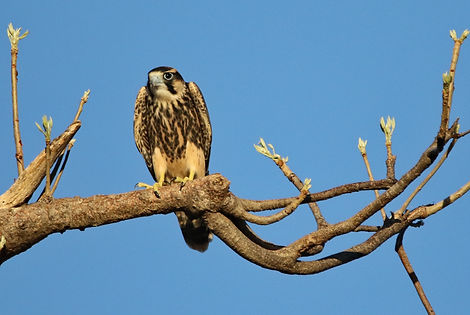
Visiting Limpopo-Lipadi regularly for more than ten years, the unusually rich avifauna became a permanent focus while on safari. Lipadi has several distinct ecozones including mopane, bushland with a multitude of trees (e.g. knobthorn, marula, kirkia and baobab), rocky outcrops, grassy plains, springs and swamps as well as a long stretch along the Limpopo with riverine forest. Birdlife thus is unusually rich, please enjoy some representatives and highlights we were fortunate enough to observe.
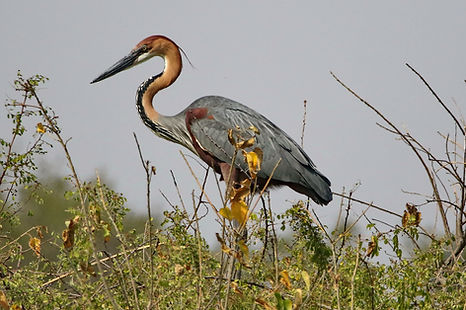
Besides numerous darters and cormorants (reed and white-breasted) quite a number of heron species (grey, great and green-backed) are usually found near the riverbanks. Goliath herons are common on the island in front of river hide, this individual was nesting in aug 2023.

Spoonbills are not very common in lipadi, but seemingly good food supply in shrinking riverpools attracted this individual in sep 2016.

Openbill storks are uncommon in lipadi, this individual was fishing for snails in aug 23.
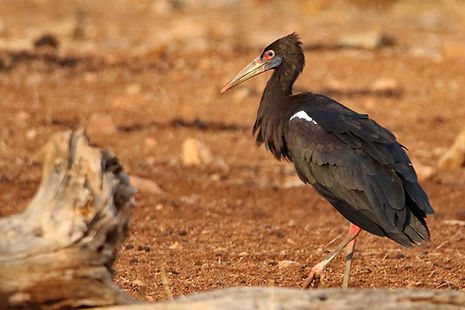
Abdim's storks are intra-african migrants sporadically moving to lipadi. We found three of them on the exposed boma grounds end of oct 2024.
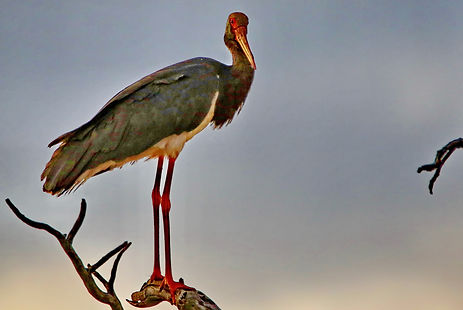
black stork on an exposed tree near Tholo dam in nov 2023, an uncommon migrant from europe

Marabou storks likewise arrive in lipadi at the beginning of summer from further north, this individual was seen end of oct 2024 near mohorosi.

Saddlebill storks are uncommon anywhere in africa, they can sometimes be found along the limpopo river. This couple regularly visited mohorosi in aug 2023.

Hamerkops frequent lipadi' s waterholes, where they build huge nests in neighboring trees. This one was seen at cabbage in aug 2017.
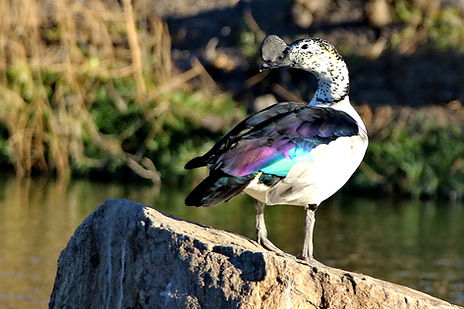
A knob-billed duck made mohorosi home in sep 2018.

Vulture numbers in southern africa have plummeted due to hunting and poisoning. Still today a number of white-backed vultures (this from sep 2012) can be seen in lipadi with a declining number of nest along the limpopo.

Lappet-faced vultures are rare today in southern africa. This one was perched near a kill in aug 2012, sadly there are no recent sightings in lipadi.

In nov 2019 this tawny eagle was seen at northern plains, not a common find in lipadi.
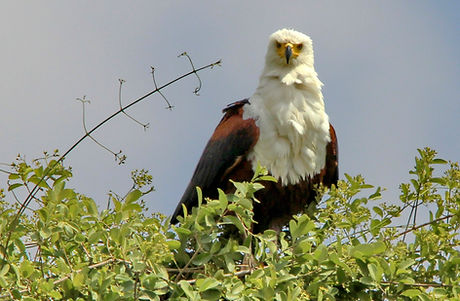
African fish eagles are common along the river and can always be seen from the lodge.
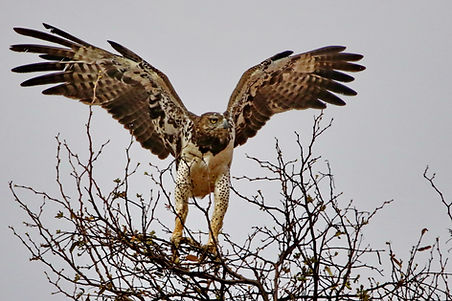
Likewise martial eagles are uncommon in the reserve, this bird was seen in nov 2019 near mbusi.
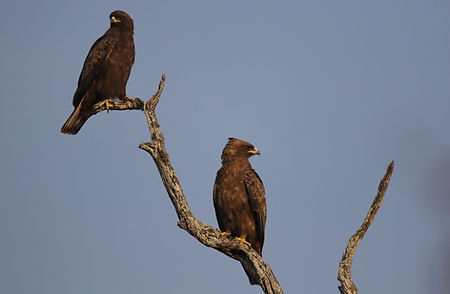
At the end of winter usually wahlberg eagles move in and can regularly be seen. This couple was perched at mazindlovu in sep 2018.
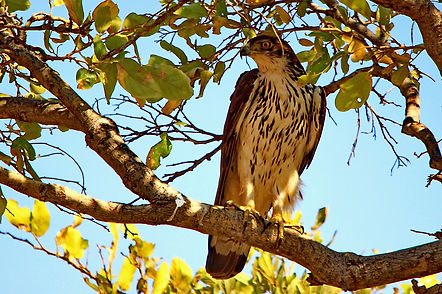
Several pairs of african hawk eagles are resident and can often be observed, this bird was seen near cabbage in aug 2013.

Yellow-billed kites are intra-african migrants and show up in lipadi at the end of winter. They are often attracted by carrion, this one tried to snatch some pieces from a kudu killed by hyenas at mohorosi in oct 2022.
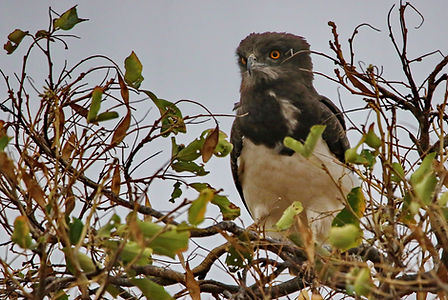
Snake eagles (brown and black-breasted) are common year round and during the wetter months snakes form a major part of their diet. This black-chested was seen perched in oct 2024.
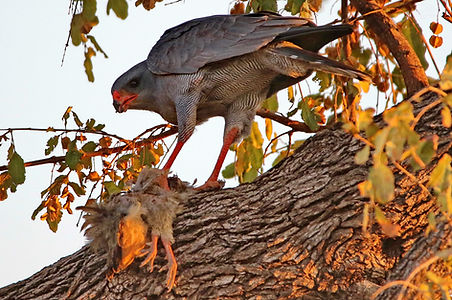
Dark chanting goshawks are probably Lipadi's most common raptors. This individual caught a francolin or spurfowl at mohorosi in aug 2023.
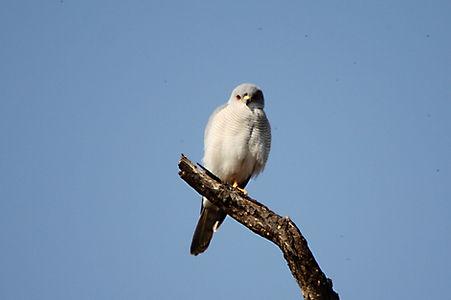
Shikras are often seen in Lipadi, usually perched on smaller trees watching the ground for lizards, large insects or small birds to catch (aug 2013).
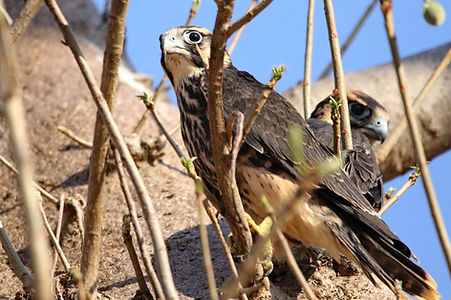
Peregrine falcons, the worlds fastest skydivers, catch birds in flight. They are not common in botswana and a rare sight in lipadi. In oct 2024 three almost grown-up birds were guarded by an adult (see cover pic) at their nesting site 'four baobabs'.
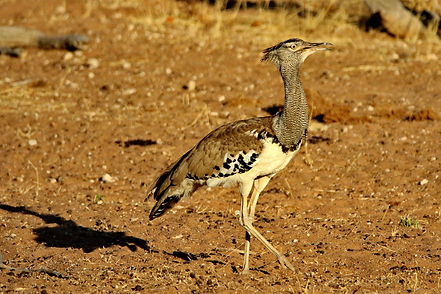
Kori bustards are the world's heaviest birds able to fly. They usually prefer running as it takes some effort to lift to the air. Middle plain mostly harbours a pair and with luck they can be seen drinking at cabbage at sunset (nov 2019).
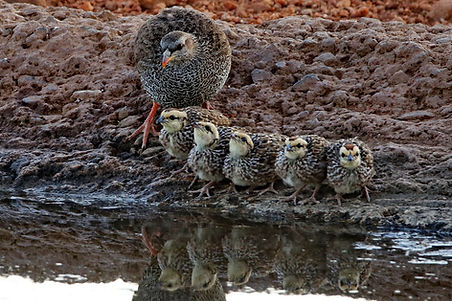
Natal spurfowls are likewise very common, this mother led her chicks to mbusi waterhole in aug 2017.
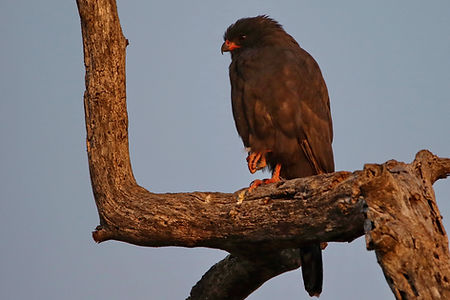
Gabar goshawks are also frequently seen. This is one of the smaller raptor species and they often prey on small birds. The dark morph is uncommon (seen sep 2018 near mohorosi).
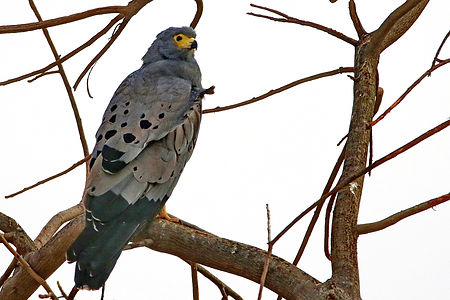
Gymnogenes are likewise common and can often be seen angling for prey with a foot in treeholes (aug 2017).

Ostriches, the world's largest birds, used to be common in lipadi. This male approached shareholder gate in sep 2018. We never saw them nor heard their lionlike calls during more recent stays, they seem to have vanished.

Swainson's spurfowls are common all over lipadi.
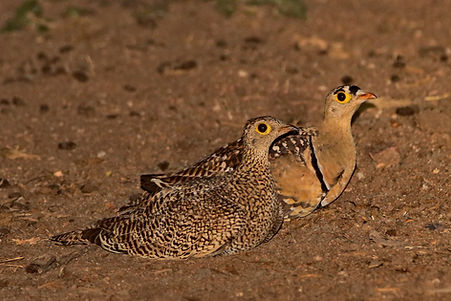
Large numbers of double-collared sandgrouses come to drink daily at dusk at most waterholes.
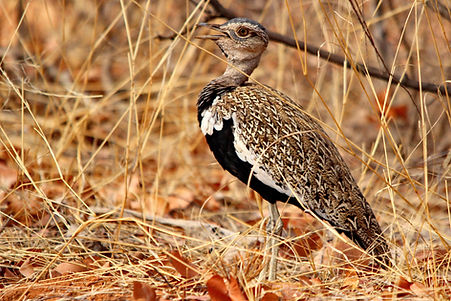
Red-crested korhaans are common in Lipadi, at the end of winter a spectacular display can often be seen. After continuous calling (here in sep 2016) males fly up and let themselves fall like a stone to the ground. Just before impact they break and land safely.
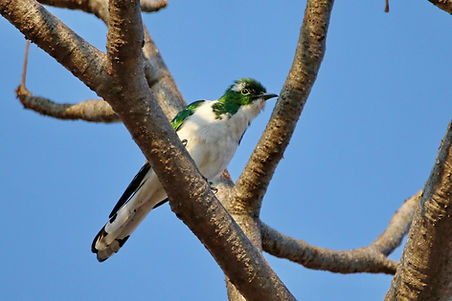
Klaas's'cuckoos are intra-african migrants and arrive for breeding in late winter (sep 2018).

Also levaillant cuckoos are intra-africant migrants and arrive in smaller numbers early summer (nov 2015).

African green pigeons are intra-african migrants and can usually be seen in the office garden during the warmer months.
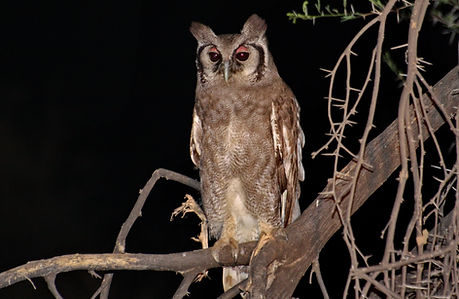
Giant eagle owls are less common, but can often be heard at night from the lodge. They regularly hunt for larger birds like guinea fowl at the waterholes (mbusi oct 2014).
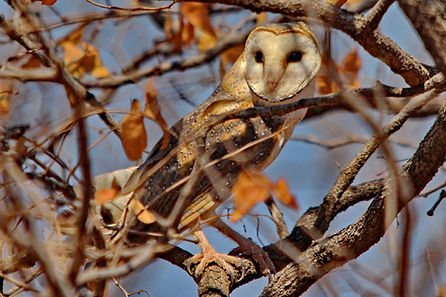
Barn owls often live in deserted buildings, in sep 2016 a pair could easily be seen at the boma.
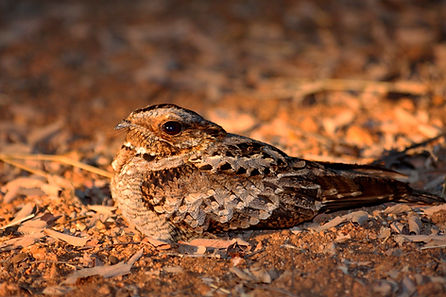
Nightjars are commonly resting on roads at night. Several species can be seen in lipadi, they are best told apart by their calls. This appeared to be a fiery-necked.

Giant kingfisher are common along the river. During dry season they use remaining puddles of water to catch crabs (sep 2018).

Woodland kingfishers are intra-african migrants and their characteristic calls can be heard after arrival in summer (office garden, nov 2015).
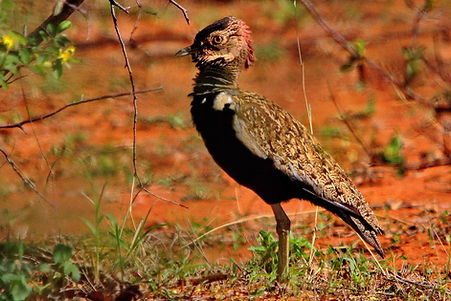
The name giving red crest is only very rarely seen, we got lucky in nov 2015. All these performances have the sole purpose impressing a watching potential mate.
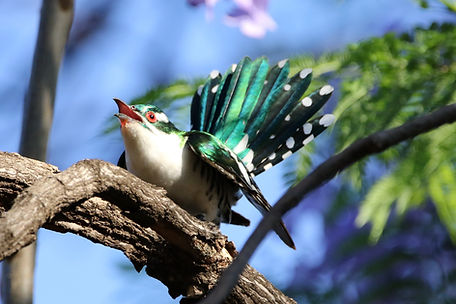
Likewise diederik cuckoos come for breeding from central africa. They are common in lipadi and frequent calls are a characteristic sound in summer (nov 2015).

a namaqua dove in breeding plumage (oct 2024), a common sight at the waterholes
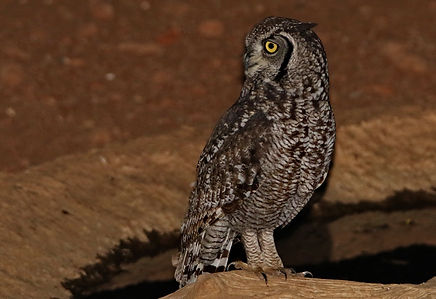
Spotted eagle owls are the most common owls in lipadi. They can regularly be seen during night drives.
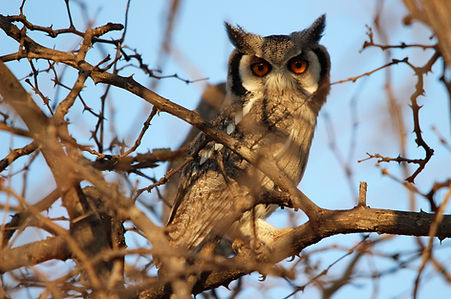
This southern white-faced owl was seen in aug 2012 near zansibar, they are uncommon in lipadi and we had to wait until oct 2025 for a another sighting.

Pearl-spotted owlets are common diurnal hunters, they specialize on birds (sep 2018). Eye-like markings on the rear of their heads are believed to distract potential enemies.

Purple rollers can frequently be seen during the warmer months (oct 2022).

Striped kingfishers prefer to hunt for insects and lizards in bushland (sep 2018).

Ground hornbills are large and endangered birds, uncommon at lipadi (aug 2017). They need huge tree cavities for breeding and a pair was seen at hollow baobab in oct 2024, however nesting could not be confirmed.
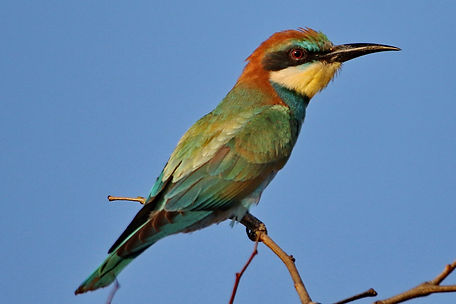
Lipadi is home to several bee-eaters including summer visitors like this european bee-eater (oct 2022).

Little bee-eaters are commonly seen year round.
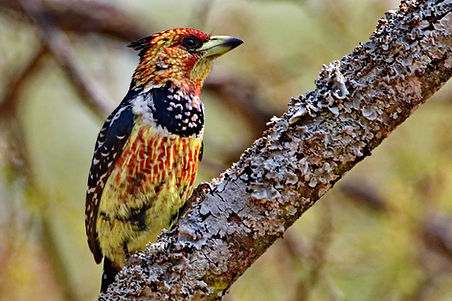
Crested barbets are often found near the river (aug 2023).
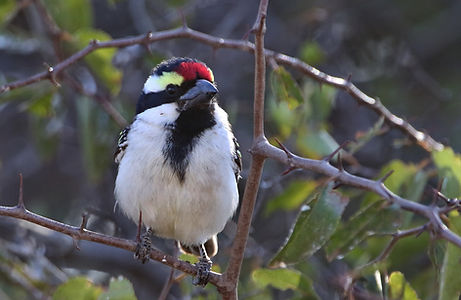
Acacia pied barbets can frequently be seen at the waterholes (sep 2019).

Large trees often attract golden-tailed woodpeckers (sep 2017).
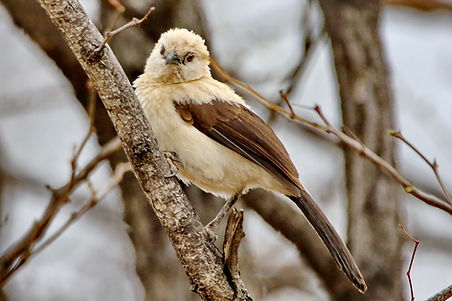
Southern pied babblers travel in small groups and prefer dry bush land (nov 2019).
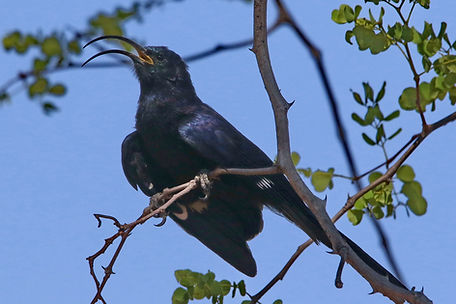
Scimitarbills are less common and are likely found in the riverine forest. Like other hoopoes they use their long curved bills to hunt insects in tree cavities (oct 2024).
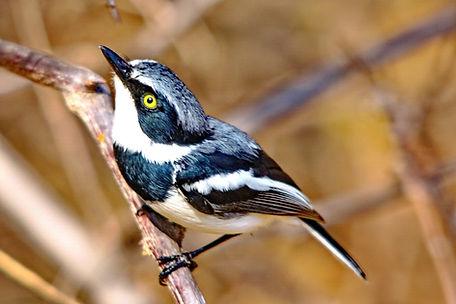
Chinspot batis are small flycatchers which frequent the riverine forest. Mostly they travel in pairs (here a female) and disclose their presence by a characteristic 3 note call (sep 2010).
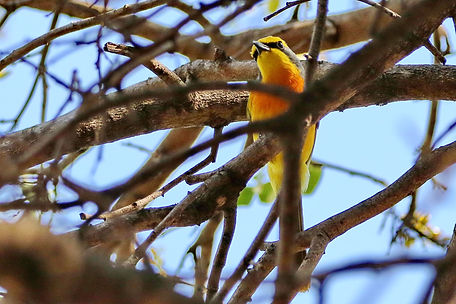
Orange-breasted bushshrikes are common along the river, but not always easy to spot in dense vegetation (nov 2019).

Lesser grey shrikes are summer visitors found in dry bush land (nov 2019).
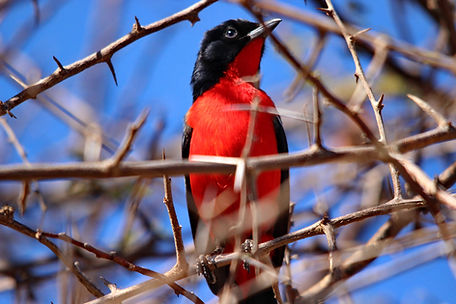
Crimson shrikes are strikingly colourful, they are common year round in more open dry bush (oct 2014).

Larger herbivores usually attract red-billed oxpeckers, which synergetically eat ticks, but sometimes also flesh from open wounds (aug 2017).

Besides lipadi's common marico and white-bellied sunbirds, collared sunbirds can often be found near the lodge (aug 2017).

long-tailed paradise widah, already in breeding plumage in aug 2017
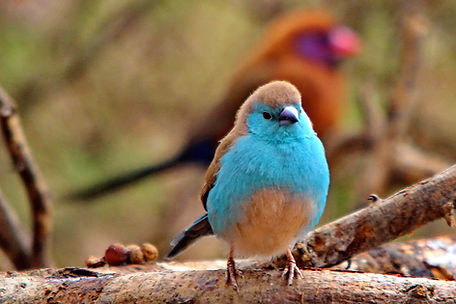
Blue waxbills are very common at the waterholes.

Another common visitor at waterholes is the black-faced waxbill.

Yellow-faced canaries can best be seen at one of the waterholes.

Bearded woodpeckers are less common, but can sometimes be seen near the lodge (sep 2010).
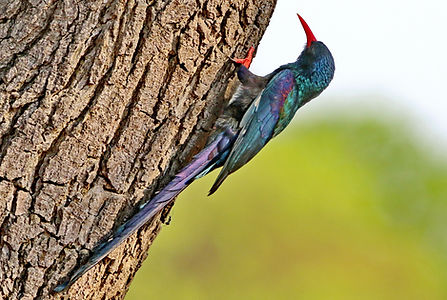
Green wood hoopoes likewise travel in groups. These attractive birds are common along the river, often close to the lodge (oct 2022).

These cisticolas (rattling, I believe) had an intense fight at mohorosi in oct 2024, most likely over territory.
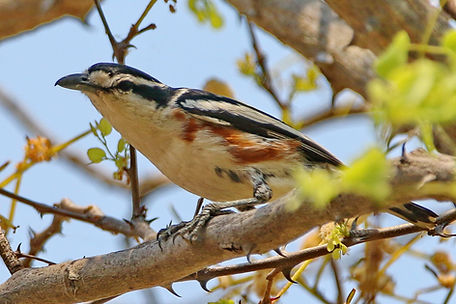
Brubrus are birds of dry bush, where their telephone like calls can be heard (oct 2022).

Grey-headed bushshrikes are less common, they also prefer dense vetation (aug 2017).

Likewise red-backed shrikes indicate the arrival of summer (nov 2019).

White-crowned helmet shrikes can usually be found in forested areas (sep 2010).
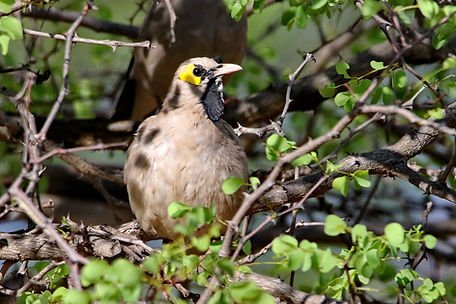
Wattled starlings are an uncommon sight in lipadi, we got a view of these interesting nomads near the lodge access road in nov 2019.

This southern masked weaver was busy constructing his sophisticated nest in nov 2019 near the river.
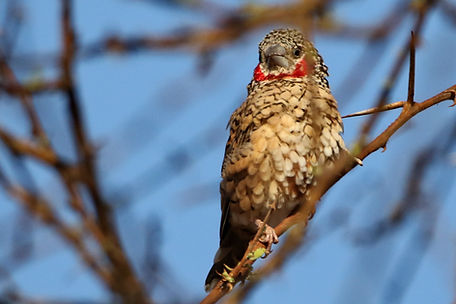
Cut-throat finches are not common in Lipadi, a group was visiting thelma waterhole in nov 2019.
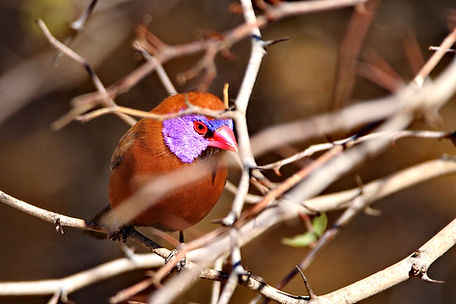
Violet-eared waxbills likewise can best be seen drinking at a waterhole, however in much smaller numbers.

Green-winged pytilias can also often be found drinking at a waterhole, some live near the river.

Also golden-brested buntings can often be seen drinking (old man aug 2023).
bottom of page